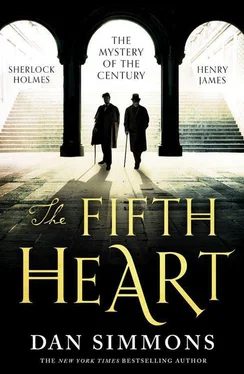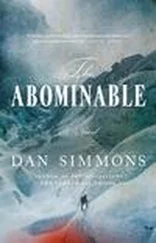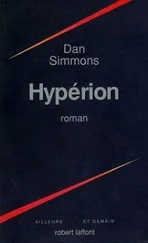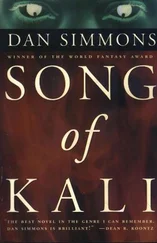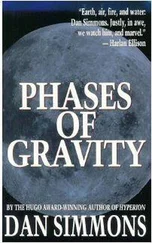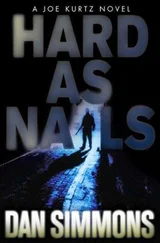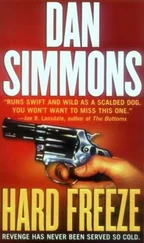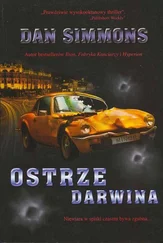“You will never guess what is scheduled for Waldheim Cemetery for the day of May fourth,” said Bonfield, showing more anger in his expression than Holmes had ever before seen in that stable younger man.
“Waldheim,” repeated Holmes, puffing his pipe to life and setting away in his trouser pocket—next to the .38-caliber lemon-squeezer pistol—the unique lighter. “That’s where the four hanged anarchists were buried, was it not?”
“It was,” said Bonfield. “Now it’s a shrine to the ‘brave union organizers’ who ambushed my men and me here seven years ago. They’re unveiling a monument to the killers—or martyrs, to the popular press’s point of view—and the monument is said to be taller than this twenty-foot statue memorializing the eight police who died that day. Early estimates suggest that there may be eight thousand or more people turning out in Waldheim Cemetery for the radical ceremony. We wouldn’t get a dozen citizens if we held a memorial service here for the policemen who died.”
“History is a perverse mechanism,” said Holmes between puffs. “It demands the blood of martyrs—real or invented—the way a machine requires oil.”
Inspector Bonfield grunted, checked the brief gap in the traffic, and stepped out onto the street, motioning for Holmes to follow. “This has been paved over by hot top since the riot and trial,” said Bonfield, “but you’ll remember that it was about here”—the Inspector’s polished shoe came down on an unremarkable spot—“that you showed me the egg-shaped indentation in the cedar-block paving of that time, where the heavy bomb had first struck and . . .” Bonfield stepped further out into the street. “It was here where you noticed the smooth, oval crater where the bomb had actually exploded. By lining up the small impact dent with the actual crater—using red string in the model you provided us—we were able to show that the bomb had been thrown from the alley, not from somewhere south of the advancing police as the defense would have had the jury to believe.”
Inspector Bonfield was so immersed in the memory that he failed to notice a large dray wagon with four huge horses bearing down on him. Holmes gathered the police detective by the elbow and moved him safely to the curb opposite the alley.
“The bomb went off right beneath Patrolman Mathias Degan,” continued Bonfield, speaking as if from a mesmeric trance. “Degan was a friend of mine. The shrapnel that killed him was no bigger than your thumbnail, Mr. Holmes. The doctor gave it to me and I have it, in my bureau. But it severed Mathias’s femoral artery and he bled to death, right there on where the cedar paving blocks used to be. And in my arms.”
“We proved that six of the eight policemen who had been shot—rather than those wounded by bomb shrapnel—had been shot at a downward angle,” said Holmes. “Someone firing a rifle from that window up there, next to the alley.” He pointed at the window of the corner shop facing Desplaines Street.
“The prosecution made that case but the jury made nothing of it,” said Inspector Bonfield. “But your evidence, Mr. Holmes, did prove that the carpenter Rudolph Schnaubelt was the man who threw the bomb from that alley right at the cluster of police.”
“Showed it beyond a doubt,” agreed Holmes. “But you’ve never apprehended or arrested him.”
Inspector Bonfield held his hands out. “How can we arrest him if we can’t find him, Mr. Holmes? We’ve tracked down leads saying Schnaubelt was in Pittsburgh, in Santo Domingo, that he’d died in California, that he was begging in the streets of Honduras, that he was living in wealth in Mexico. That socialist rag—the Arbeiter-Zeitung —published a letter reportedly from Schnaubelt and the letter had been postmarked from Christiania, Norway. The man is a phantom, Mr. Holmes.”
“The man—Schnaubelt—has been making a good living as a manufacturer of farm machinery in Buenos Aires,” said Holmes. “He arrived in Argentina a month after the Haymarket Square riot and has lived and prospered there ever since.”
“Why didn’t you tell us this?”
“I cabled all the information—including Schnaubelt’s work and living address—to your major and superintendent of police in early eighteen eighty-seven,” said Holmes. “There was no reply. I sent a second cable with the same information, this time including various aliases Schnaubelt had used. Again . . . I received no response.”
Bonfield had taken off his cap and looked as if he was preparing to rip clumps of his hair out by the roots.
Holmes glanced at his watch and removed his pipe. “It’s getting late, Inspector. You’re my liaison while we follow the carriage route that will carry President Cleveland to the Exposition grounds, and then I am scheduled to receive a quick tour of the White City itself. But we’ll have to trot to get to the Lexington Hotel by their departure time.”
“We’ll let the horse do the trotting,” said Inspector Bonfield. He whistled and a sleek black carriage, driven by a uniformed Chicago P.D. patrolman, glided up. The driver jumped down and opened the carriage door for them.
* * *
There were two carriages waiting for Bonfield and Holmes outside the Lexington Hotel at the intersection of 22nd Street and Michigan Avenue. The first was an oversized canopy-covered surrey with three bench-rows of seats facing forward rather than the usual two, plus a fourth bench seat looking backward. It was filled with uniformed police officers.
The second was an open carriage—much more comfortable looking—and the driver was a big man with bright blue eyes and a trim salt-and-pepper beard that looked a bit like that of former President Ulysses S. Grant. Holmes estimated from the man’s hands that he might be around sixty, but there were no wrinkles, save for a few laugh-lines, on his face. He wore a working man’s comfortable corduroy trousers and well-worn boots, but also a rather expensive-looking wool hacking jacket. Most noticeable was the black slouch hat set back on his head as if he wanted the April sun to turn his winter-pale forehead pink.
Inspector Bonfield said, “Mr. Sherlock Holmes, may I have the honor of introducing you to our mayor-elect, Mr. Carter Henry Harrison.”
The handshake was firm without being bruising. “I’m delighted, absolutely delighted, to meet you, Mr. Holmes!” said Harrison.
“Mayor-elect?” asked Holmes.
“I was elected for a fifth term—not sequential, I’m ashamed to say—on April fourth,” said Harrison. “But I don’t officially take office until the twentieth. But Mayor Washburne was busy sulking and cleaning out his office so I jumped at the chance to show you the route we’ll be taking with President Cleveland.”
One of the police officers was walking back to the mayor’s carriage and the mayor said in a very soft voice to Bonfield, “Uh-oh, here comes McClaughry.”
Holmes could see by the badges McClaughry was the Superintendent of the Chicago Police Force. Mayor Harrison introduced him as such and again there was a handshake, this one even more enthusiastic.
“Mr. Holmes, I have been so looking forward to meeting you!” said Chief McClaughry. “When I was warden of the Illinois State Prison at Joliet, I was responsible for creating America’s first full system of bertillonage . You use that system, I believe.”
“To be honest, I know and respect Monsieur Bertillon and have worked with him in Paris, but I’ve found that many of his categories of identifying criminals—bone length, centimeters of forehead, and all that—are rather unworkable. So these days I concentrate almost exclusively on fingerprints.”
“Ahhh,” said Superintendent McClaughry, seeming a bit cast down by Holmes’s lack of enthusiasm toward the full category of bertillonage . “Yes, well we have fingerprint cards, as well. More than five hundred at present. Do you keep your own cards, sir, or depend upon Scotland Yard’s?”
Читать дальше
